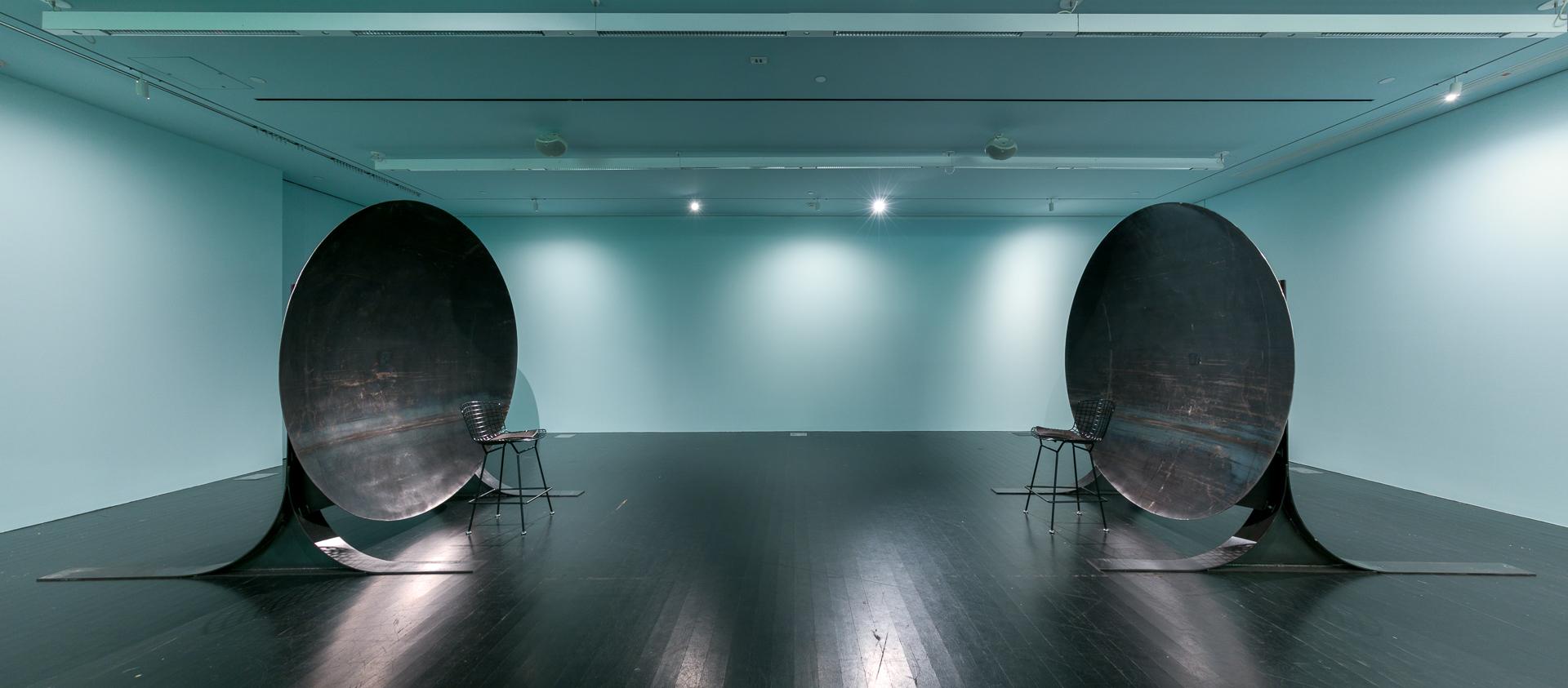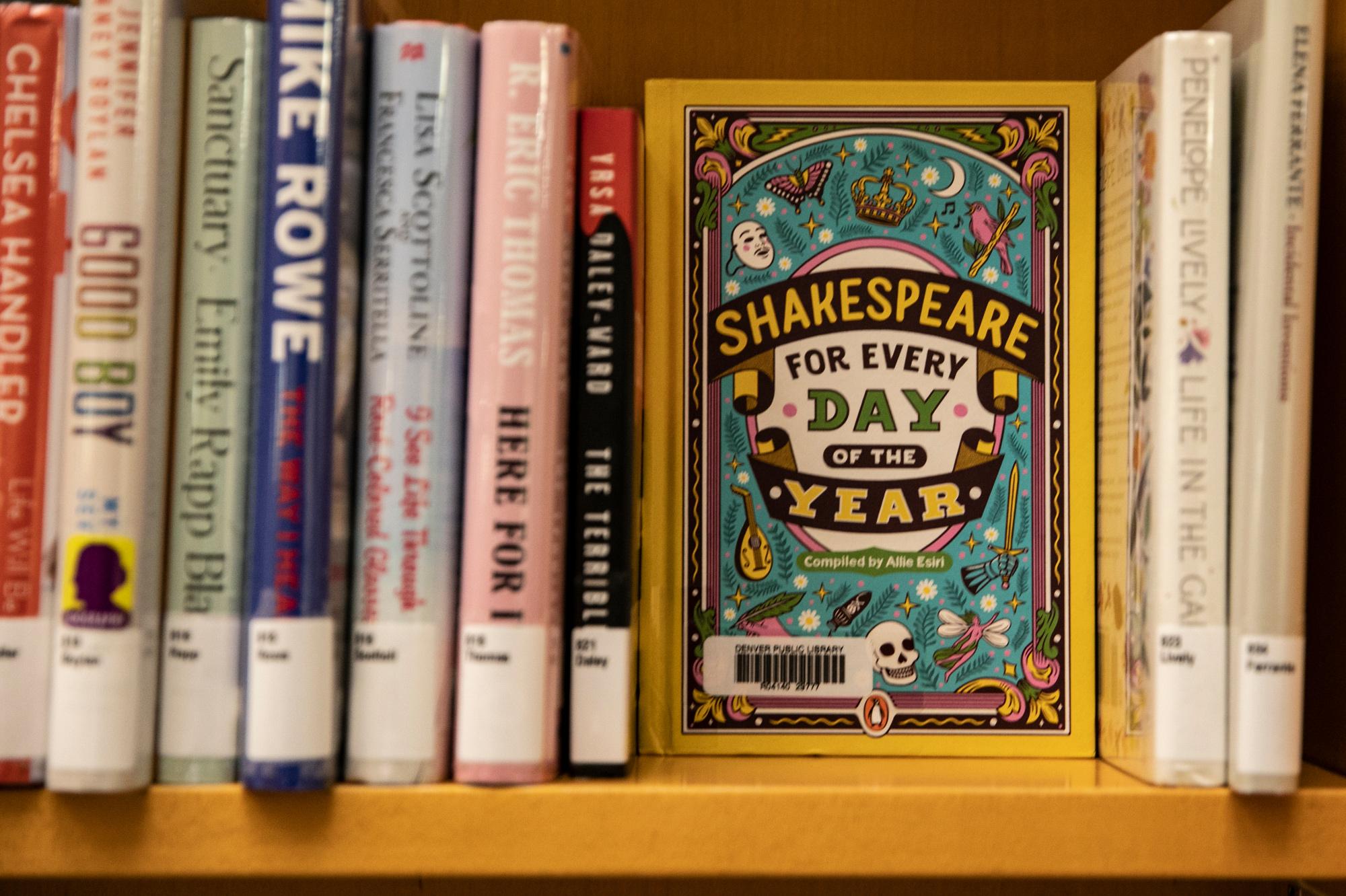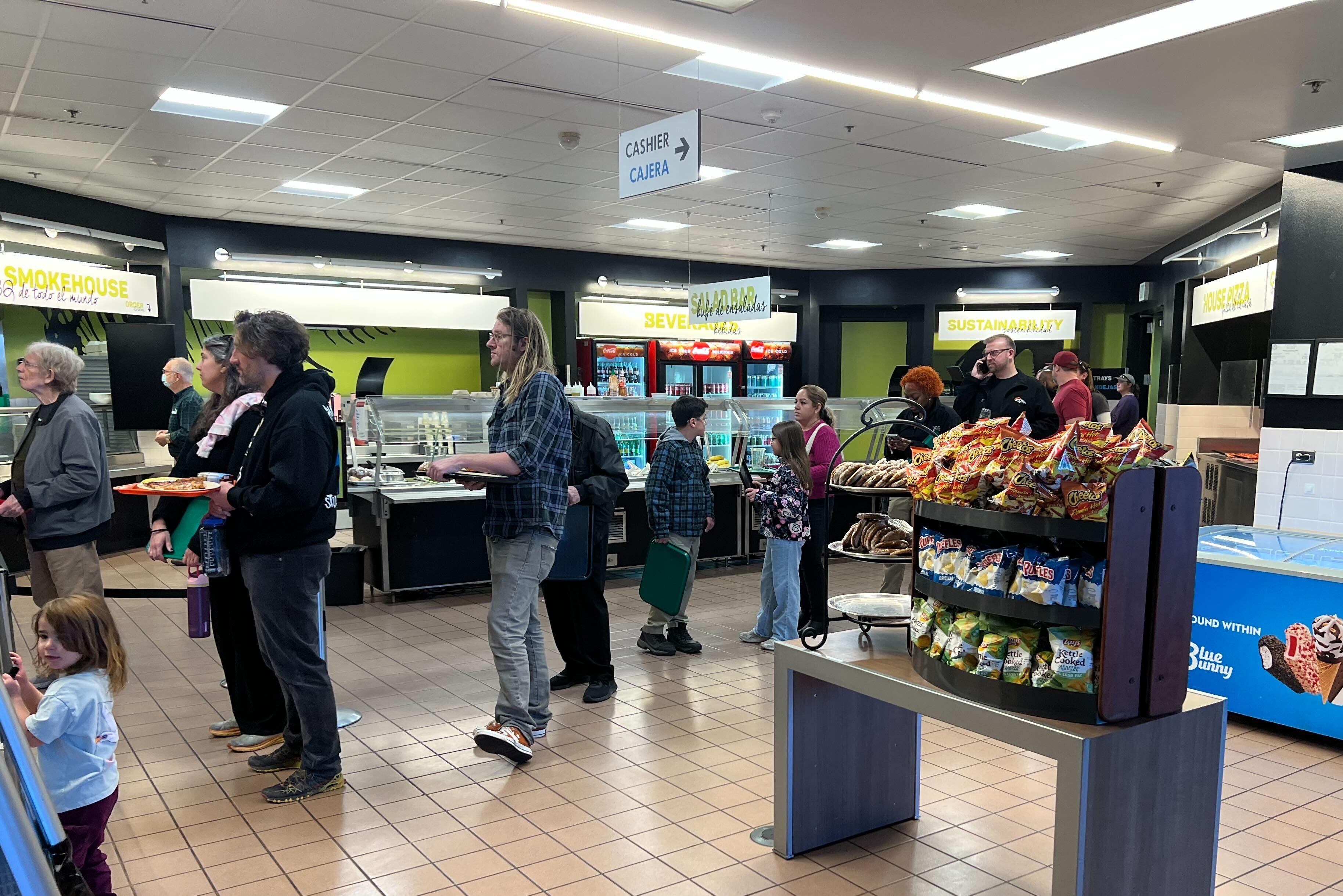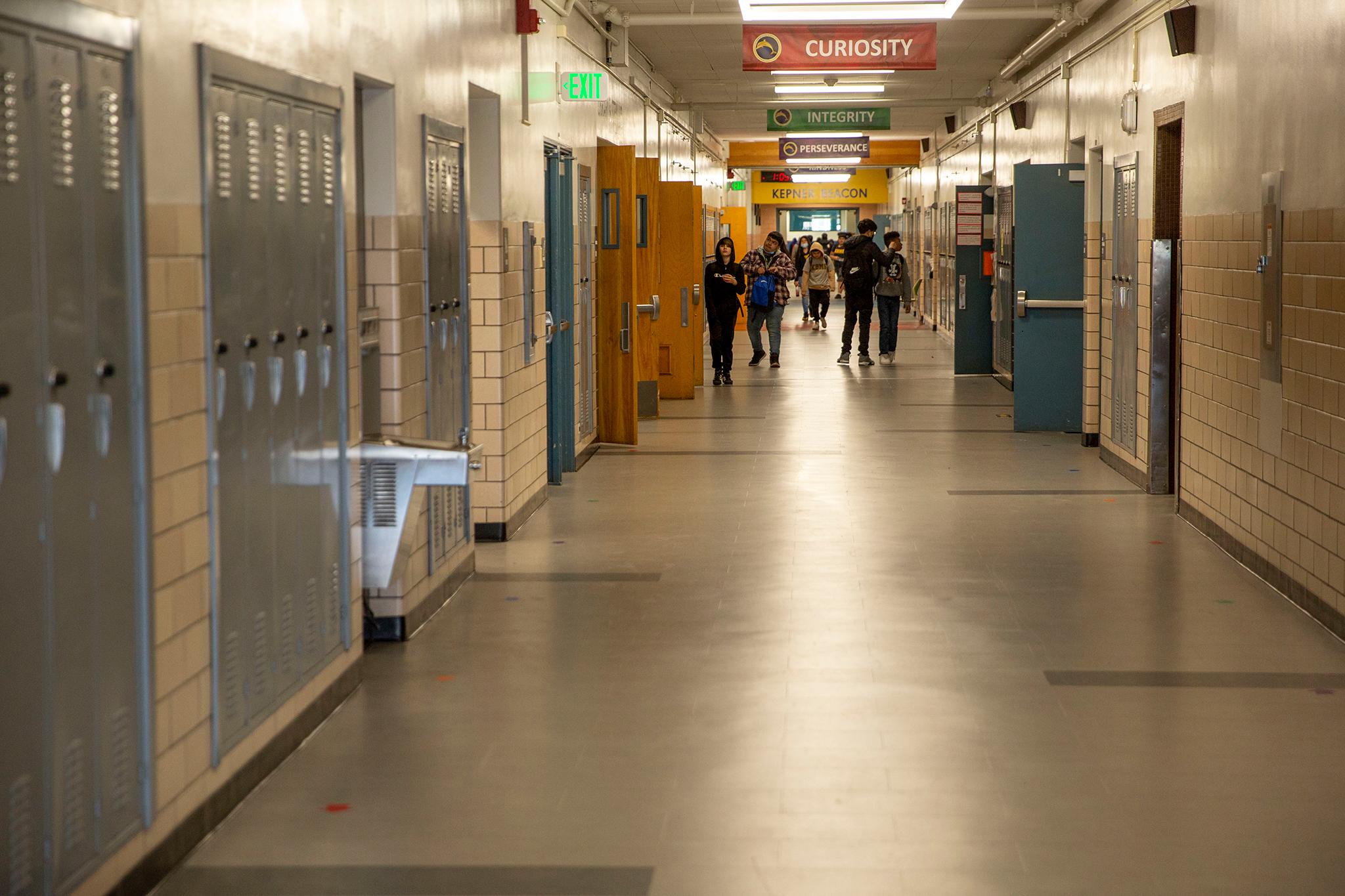There's a particular loneliness to moving to a new place during a pandemic. I'd never been to Denver before moving here in late June. I had very few connections in the city, and I wasn't sure whether I'd be welcome into the bubbles of the very few people I did know. And how do you meet new people and form close, meaningful relationships when we're supposed to maintain distance from one another?
All of that, compiled with the uncomfortable condition of being both extremely extroverted and chronically socially anxious, plus the usual anxieties about the pandemic and the general state of the world, made for a somewhat bizarre, isolating start to my time in Denver.
When I arrived at my house and met my two housemates, it was the first time in months that I'd shared a space with someone outside of my immediate family. It was the first time I'd interacted with someone new after months of quarantining in Illinois, and I stumbled nervously through those initial meetings, tripping over my words. I felt as though I'd forgotten how to interact with strangers, something that had always made me a bit nervous, and it reminded me of the anxiety I'd felt as a high schooler in the days of bus ride panic attacks and conversations where my words seemed to stick to my throat and nights spent lying awake with my stomach in knots, when the dark and quiet left nothing to drown out the thoughts I'd been stifling throughout the day.
I had left all of that behind when I got to college. I'd found my place and my people, people who allowed me to shed my anxiety and to just be, free of fear of judgment. I found that I was happiest when having spontaneous deep talks with strangers in dorm hallways, or wasting hours in the cafeteria with my open-minded, curious, empathetic group of friends. It got to a perhaps unhealthy point where whenever I found myself alone in my room, I'd leave to knock on a friend's door, refusing to be alone for a moment now that I no longer had to be.
It's been a few years since I left undergrad. My people have spread out across the country, and I've grown more comfortable with the idea that new friendships are no longer just a dorm room away. In the adult world, they take time and effort and intention. In the adult world, it's much harder to escape loneliness.
That is truer now more than ever. I hate being alone as much as I ever did, but now meeting new people comes with real risks rather than simply the imaginary ones my insecurities and anxieties conjured up. With all of these factors in place, it can be hard not only to meet people in a pandemic world, but to safely carve out enough time and space to solidify those friendships, to have the kinds of intimate conversations or memorable experiences necessary to do so.
That's why meeting my friend Lexi, and meeting the way we did, was so exciting.
I met her in July. I was at dinner with a visiting friend at an outdoor patio. Lexi was our server. She was my age, with a messy bun and a comforting, breezy, warm openness to her. I liked her funny way of speaking, as if the words fell out of her mouth as soon as she thought them, uninhibited. She reminded me of friends I'd made in college.
Near the end of our meal, we got to talking about how we were both Illinois transplants and how hard it was to meet people in Denver. She suggested that we be friends.
"I can give you my number, and if you want, you can text me. Or not! I don't know," she stammered in her funny, breezy way, already hurrying away from our table. "OK, I'm gonna go write it down!"
I eventually texted Lexi, and we met up at Denver Central Market a month later. We sipped coffee, wandered out into the August heat and talked for what felt like 20 minutes. It was six hours. We talked about family and relationships and our career aspirations and anxiety and grief and empathy and childhood and how we became who we are today. We talked about how we were both nervous to meet up that day, and about the peculiar pressure of friend-dates -- how if they don't lead to something lasting, it almost feels more disappointing than real dates do.
But we were still in a pandemic. For us to hang out again would mean another carefully planned outdoor hangout, and I didn't see Lexi for more than a month after that six-hour chat.
By the start of October, my quarantine pod consisted of six people, and two of them were moving away. As the days grew shorter, darker and colder and cases continued to rise in Colorado, I began to realize that time was running out for me to expand my Denver bubble before winter -- and a possible second lockdown -- kept us all indoors.
When times are hard, we want to keep our loved ones close. We want to lean on the people around us and lift them up in turn: to hug them, share intimate conversations. The paradox of the times we're living in now is that while the stress of the pandemic might make us crave intimate human interaction, this particular disaster keeps us from it.
Even before COVID, it felt to many as if we were becoming a society of silos, of bubbles formed by geography, technology, social media, bipartisanship. Now, during the pandemic, we are practically unable to introduce new people into our worlds, further isolating us into our ideological bubbles as we limit our interactions to being with only those directly nearest us.
Colorado artist Laura Shill was concerned with that erosion of social ties, which she saw as being caused by technology and political polarization.
"I had a moment a few years ago where I realized I was really trapped in my own echo chamber," she told me. "And the information ecosystem that I was part of was prioritizing expediency and outrage over everything else."
She found that as more and more of her communication became mediated by devices, she was having fewer meaningful interactions, even with the people she cared about.
"Simultaneously, our political system is sort of unraveling, and we are becoming more divided," she said.
She sought to establish some practice, through her art, that could get people to care about one another again: a blueprint that might help people seek meaningful discourse in their everyday lives.
She thought about the 36 Questions -- a series of intimate get-to-know-you questions developed by psychologists in the 1990s. While the study was popularized by a New York Times article in 2015 as being a way to make people fall in love, the original goal was simply to generate a feeling of closeness, understanding and empathy between two strangers.
"I thought, wouldn't it be great to prioritize sitting across from another person, and having a conversation with them with the intention of understanding them better?" Shill said. She began to work on an art activation that would enable two people to participate in the 36 questions.
Zoe Larkins is the curator of the MCA's new exhibition, Citizenship: A Practice of Society. The exhibition features the work of more than 30 artists, all of whom grapple, in some way, with what Larkins said is our country's troubled, flawed idea of citizenship. She said that rather than being simply a legal categorization, citizenship, ideally, is about participation.
Larkins said Shill's idea appealed to her as a way to facilitate participation through discourse.
"The work seems sort of whimsical or romantic in concept," she said. "But in fact, it gets at the importance of discourse, which really is the bedrock of civil society. And it's something that a lot of us don't make time for anymore. It also emphasizes the importance of listening, and active listening, because we can't have discourse without listening."
Shill and Larkins put together an interactive installation at the museum that would allow visitors to try the 36 Questions for themselves. It's called "Including Other in the Self," a phrase borrowed from the original study. Shill said that often, when identifying our notion of the self, we eliminate the things that we are not. She said that the 36 questions ask you to make room for others within our ideas of who we are, rather than excluding people as a way to shape our identity.
"We're always looking for difference. If you want difference, you'll find it. If you look for something you're going to dislike about another person, you'll find it," she said. "So what if you looked for the opposite? What if you looked for similarity? And what if you looked for a reason to love someone else?"
Initially, they'd planned for the activation to be an enclosed, intimate experience. When COVID-19 hit, they had to think about ways to redesign it to make it safe for participants. They partnered with a fabricator company called JunoWorks to design a pair of giant parabolic metal disks. The disks are placed upright behind two chairs, mirroring each other. Participants sit in the chairs facing one another, 16 feet apart, and the disks create an acoustic effect that allows them to hear each other perfectly, even at a whisper.
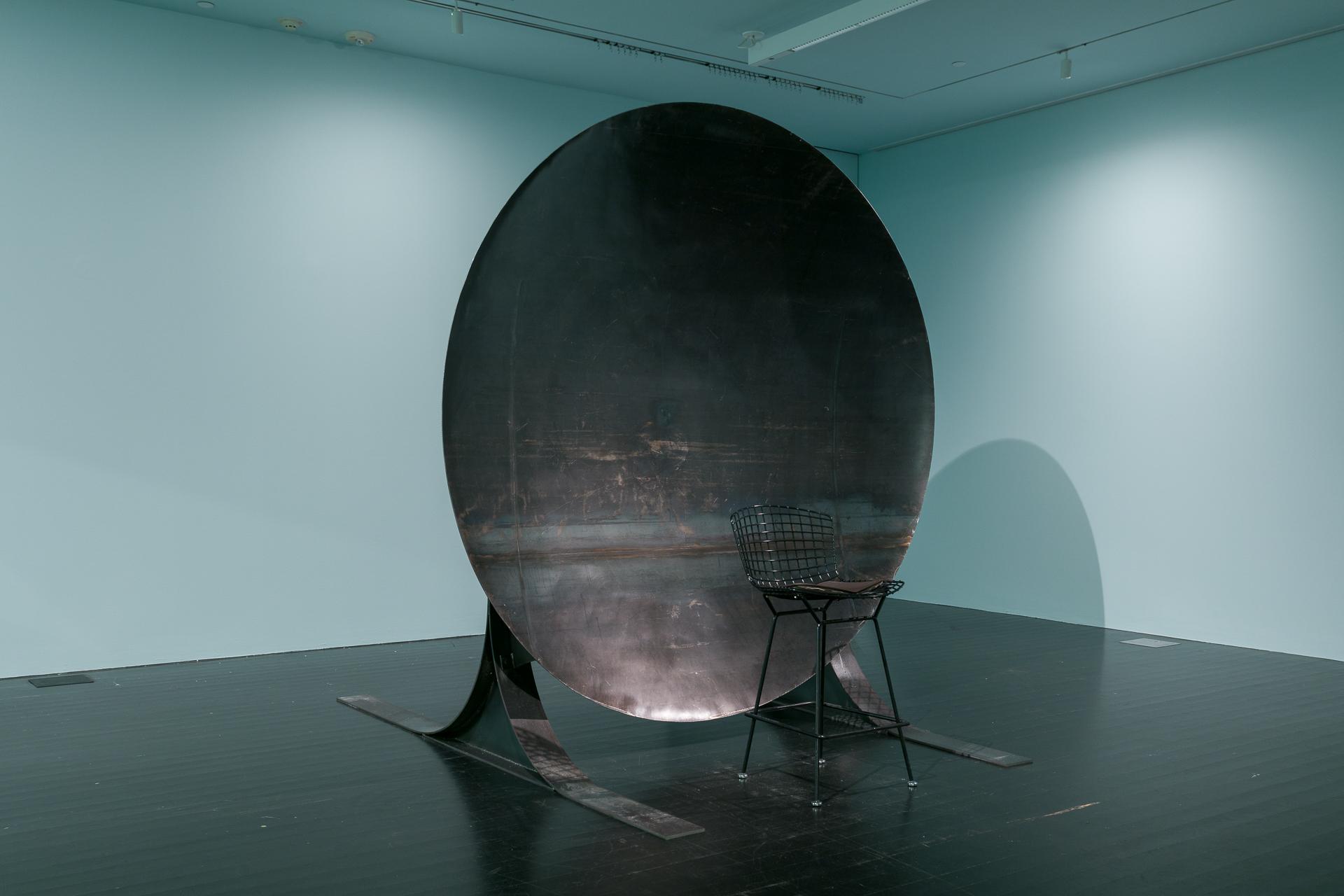
"The first time I tried it, it actually gave me chills, because I could feel the other person's voice in my ear," Shill said. "After months in pandemic, it almost feels like a substitution for touch."
Shill said the design was borrowed from the technology of war. During WWII, England would point massive, parabolic forms carved from stone or concrete toward the sky so that they could hear German planes coming to bomb them.
"If you take those two tools of war and turn them in on themselves, then instead, you can facilitate discourse," Shill said, "Which is what we use to avoid violence and war."
Now, museum visitors can come with a family member, friend or a date -- anyone they want to get to know better -- to try the 36 questions. When patrons arrive, they're each given a list of questions with instructions. For approximately one hour, they can sit at a safe distance, wearing masks, and get to know one another on a deep level. And on the second Friday of each month, they can sign up in advance to try the activation with a complete stranger.
I knew when I heard about the installation that I wanted to try it, and that I wanted to try it with Lexi.
She was an empathetic listener, someone interested in meaningful conversation and someone I thought would embrace the activation completely. And I hoped that something like this would help to solidify our friendship.
Still, this was a deeply intimate thing to ask someone to take part in. Reading down the list of questions, I saw that they increased in intensity, ranging from "Would you like to be famous? In what way?" To, "Of all the people in your family, whose death would you find most disturbing?"
But she agreed enthusiastically, and we met at the MCA on a Monday, when the museum was closed to regular visitors.
An MCA official showed us to the installation: an echoey gray room, entirely empty except for the chairs and the metal disks behind them. She handed us the list of questions, and left the room.
I asked Lexi how she was feeling.
"Going into this? I don't know why, I'm kind of nervous," she said. "I feel like I'm sweating. My palms are all clammy. I don't know!"
I was nervous, too. The emptiness of the museum, the quiet, save for a faint buzzing, and the gray expanse of the activation room created a strange void, with nothing to fill it but me and Lexi and the conversation we were about to have.
The room echoed as we took our seats and faced each other. We tested the acoustic effect.
"It's crazy, I can hear you so well! It's like you're right next to me," Lexi said. "Do you feel as though your ears are vibrating? I feel like there's this sensation in my ears. I guess that's just the feeling of you being next to me. But realistically, you aren't."
We launched into the questions. As we talked, we more than doubled the estimated hour needed to go through the questions, and through the experience, we came to realize how similar we were.
"Sometimes when you're talking about me, it's like you could be talking about yourself, too," Lexi said.
We'd both choose family members as ideal dinner guests rather than celebrities or historical figures. We don't want to meet anyone famous, or to be famous ourselves, though we would want to make contributions to the world worth being famous for. We both rehearse telephone calls. Our perfect days would be spent in the mountains, with friends and dogs and beer. We both sing to ourselves. Given the choice, if we lived to 90, we'd both rather retain the mind of a 30-year-old rather than the body of a 30-year-old. We both had grandparents with dementia. We both have an uncomfortable awareness of our mortality and the fragility of the mind. We're both aware of the passing of time, and don't want to waste it. We both take pride in our listening skills, and are interested in what people have to say. We'd both save our journals if our house caught fire. We both feel as though the anxieties we have have lend themselves to our growth in positive ways. We are both very people-orientated and value relationships. We're both driven. We both work in social fields, despite being anxious.
When we got to the end of the list, I asked how she was feeling.
"I remember when I first started I said I felt nervous and I was kind of sweaty. But this is a conversation like we had that one time. So it was a breeze, really! Not nervous at all," she said. "That was fun!"
She asked how I felt after.
Good, I thought the conversation reminded me of late-night talk I'd had in college. It had been so long since I'd had a conversation like that- since I'd sat down with someone I barely knew and just talked, and felt closer to them after. I didn't know if it was enough to bring each other into our bubbles, but it was an indescribable relief to have had that conversation with Lexi.
When I spoke to Laura Shill, she told me she gets a lot of her intimate interactions from chatting up strangers she meets in passing.
"I'm finding that when I do have those encounters with strangers that it gets to an intimate place much more quickly," she said. "Like, last night, I answered a call -- it came up on my phone as potential spam. And then I ended up having a conversation with the person on the other end for like 30 minutes. We were talking about our moral philosophies, how we're coping."
She asked if I, too, was finding that although there are fewer chances to meet people, those who I do encounter cut to a more intimate place more easily or quickly. I wondered if maybe that's what had happened with Lexi -- that isolation, rather than keeping us from connecting, had pushed us to act out of character and befriend someone we met in passing. Maybe, I thought, there's an openness because of COVID that hadn't existed before.
You can try "Including Other in the Self" when you visit the MCA during regular hours. You can also sign up in advance to try it with a stranger.

